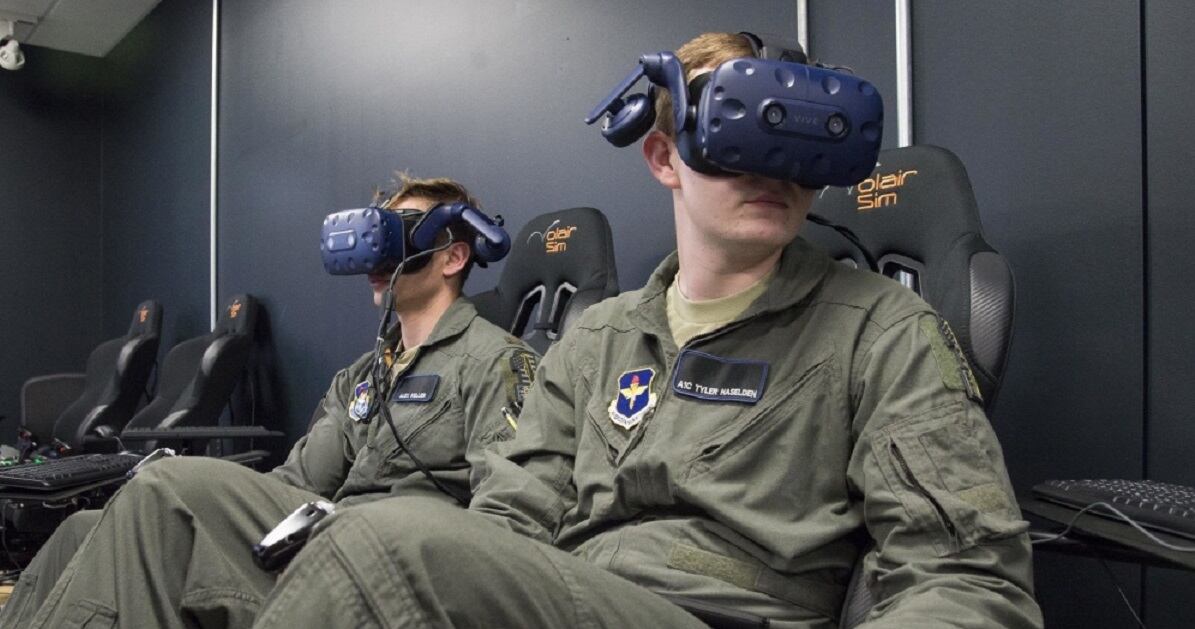Cadets at the Air Force Academy are now the latest aspiring aviators to use a cutting-edge virtual reality system to learn how to fly.
The academy’s new Airmanship Next program is an offshoot of the Pilot Training Next program, which was launched in 2018 by Air Education and Training Command. Under this system, aspiring aviators use a combination of virtual reality, biometrics and artificial intelligence to better learn flying skills. Using VR does not replace flying time in an actual airplane, but it augments it so students have more time to hone their knowledge and maneuvers.
Airmanship Next launched this fall semester, although some cadets got to try it out over the summer, the academy said in a Monday news release. Adding VR flight time is a way to reach cadets who may have been excluded from live flights at the airfield in Colorado Springs due to scheduling conflicts, and give cadets more aviation training during their four years at the school, according to the release.
“The reality is that less than half of the cadets from a typical class experience powered flight,” Col. John Garver, the academy’s director of operations and analysis, said in the release. “We want to inspire cadets to go into rated careers by eliminating situations where cadets are interested in rated operations, but have limited opportunities to try them out.”
It will also allow cadets to fly when the weather is bad, or at night back at the cadet area, where half of the stations will be located. If they need to practice a particular skill or technique, they can run a scenario over and over until they get it right.
RELATED

“Sometimes I come to the lab in the evenings to get in some extra practice on certain skills — approaches, pattern work, you name it,” said Cadet 2nd Class Daniel Shemon, who wants to become a pilot when he graduates and is one of the first cadets to go through VR training. “It really helps me develop my muscle memory.”
The academy has already bought 16 training devices — which include off-the-shelf VIVE Pro headsets and stations with sticks, throttles and other equipment to simulate a cockpit environment — and plans to buy 12 more by early 2020. The other half of the stations will be at the airfield.
Airmanship Next “will help us meet cadets where they are and tailor their experiences to get them where they need to go to make informed career choices, including whether to volunteer for rated positions,” Garver said.
Capt. Bryan Rhoades, the powered flight program flight commander at the academy, said cadets who have practiced on the VR systems are showing up to powered flight training better prepared and more knowledgeable about radio calls and traffic patterns. Cadets in powered flight training typically complete 10 flights before their solo and check ride flights, but VR flight training allows Rhoades to make the best use of the students’ training time to prepare them for post-graduate flight training.
“It’s the difference between training a cadet who is a blank slate and cadets who would appear to have a flight or two already under their belt,” Rhoades said.
The academy is also considering an equivalency option for the Air Force’s Initial Flight Training for the top performing cadets in the class of 2021.
At Joint Base San Antonio-Randolph, the second class of Pilot Training Next students graduated in August, which included two Navy aviators and one from the United Kingdom’s Royal Air Force.
AETC Commander Lt. Gen. Brad Webb wants to expand Pilot Training Next further in the coming years, until its elements are at all undergraduate pilot training bases.
In an August interview Webb said AETC also considering similar VR experiments, under the name Learning Next, to train airmen how to maintain aircraft, fly remotely piloted aircraft, or perform other technical tasks.
Stephen Losey is the air warfare reporter for Defense News. He previously covered leadership and personnel issues at Air Force Times, and the Pentagon, special operations and air warfare at Military.com. He has traveled to the Middle East to cover U.S. Air Force operations.




